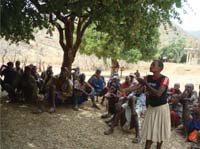Advocacy
Advocacy sounds like a really complicated thing to be undertaking, but actually it is just the act of delivering an argument so that you can gain commitment from your political and community leaders, and help your community organise itself to face a particular health issue.
Advocacy involves the selection and organisation of information to make sure that your argument is convincing. Advocacy is not just one thing or one way of doing things; it can be delivered through a variety of interpersonal and media channels. Advocacy also includes organising and building alliances across a wide variety of stakeholders.
Advocacy is strategic and it should be geared to using well-designed and organised activities in order to influence policy or decision makers about all the important issues that you think will affect the health of your community. This might include a wide range of possible issues, including health policy, laws, regulations, and programmes or funding from the public and private health sectors.
Advocacy can address single or multiple health issues, during which time-limited campaigns as well as ongoing work may be undertaken on a range of health issues. Advocacy can be conducted at national, regional or community woreda level, (Figure 17.1) — or at all levels at the same time.

You might already be involved in advocacy to improve the lives of your own community. For example, some cultures impose on their communities the practice of female circumcision or female genital mutilation (FGM). However, governments can act as advocates themselves in this area by passing laws that prohibit this practice, and also laws to protect those members of the community who refuse to have their female children circumcised.